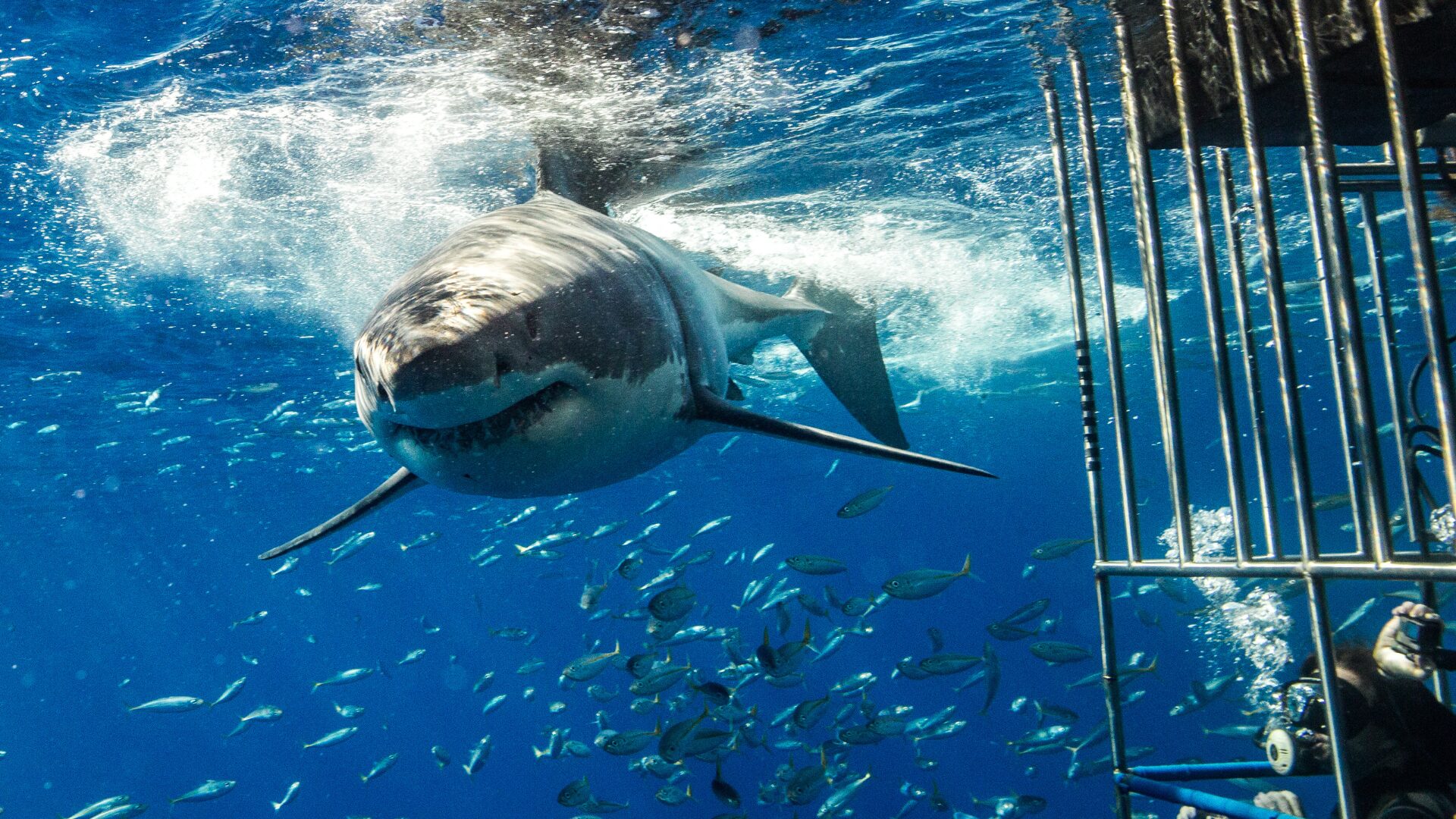
The Atlantic’s largest recorded great white shark has resurfaced off the coast of Canada, where researchers say the massive predator is feeding on seals to build fat reserves before heading south for the winter, as reported by The New York Post.
The shark, named Contender, measures 14 feet in length and weighs approximately 1,653 pounds. He was tagged by the nonprofit marine research group OCEARCH in January, about 45 miles off the Florida-Georgia coastline near Jacksonville.
‘Biggest ever’ great white shark Contender surfaces just off Canada – plumping up on seals https://t.co/HZMvwAbjOc pic.twitter.com/Vu7TBD4cjB
— New York Post (@nypost) October 9, 2025
The organization uses satellite tags to track large marine species, and Contender’s device sends a signal whenever his dorsal fin breaks the water’s surface.
Last week, OCEARCH confirmed that Contender’s tracker “pinged” from the Gulf of St. Lawrence, just off the Labrador Peninsula in eastern Canada. The location makes him “one of the furthest northern pinging sharks that we’ve had,” researchers noted.
OCEARCH founder and expedition leader Chris Fischer, 56, said the 30-year-old shark is spending the summer and fall in northern waters, where he hunts seals in preparation for his annual return to Florida.
This Could Be the Most Important Video Gun Owners Watch All Year
“Only a couple have made it that far north,” Fischer said. “An animal like that, spending the summer and fall up north—what are they doing? Well, a lot of what they’re doing is preparing for the winter.”
According to Fischer, Contender is “putting a lot of pressure on the seals, eating seals constantly, swimming in front of seal colonies, trying to put on some weight before he proceeds back down to Florida for the oncoming winter.”
Researchers noted that this natural behavior also helps balance the ecosystem. “The byproduct of putting that pressure on the seals is really good—they’re guarding our fish stocks,” Fischer said.
“If the white sharks are in front of the seals putting pressure on them, they eat one-fourth as much per day. If that white shark’s not there, those seals go out and they wipe out all the fish.”
Contender’s latest “ping” came after nearly a month of silence, having last been tracked off Pamlico Sound, North Carolina, before resurfacing near Natashquan, Canada, on September 29. Another brief signal was recorded on October 2.
Scientists believe tracking Contender’s five-year satellite data could help uncover one of marine biology’s long-standing mysteries—the location of the first known great white shark mating site.
Biggest great white shark ever recorded in Atlantic tracked off North Carolina coast https://t.co/WmePOMazUZ pic.twitter.com/fTKdyXcAvx
— New York Post (@nypost) June 12, 2025
“There’s never been a white shark mating site identified anywhere in the world in any one of the nine populations,” Fischer said.
Fischer added that mature males like Contender are vital to ongoing research. “These big mature males are hugely important because they can help us understand where and when mating is occurring,” he said.
The great white population, once decimated by overfishing in the 1960s through the 1980s, has slowly begun to recover. “We wiped out the sharks so badly—we got down to nine percent of our population,” Fischer said.
Despite his size, Contender may continue growing for decades, with great whites known to live up to 70 years and reach lengths exceeding 20 feet.
Fischer said his team plans to closely monitor Contender’s movements through 2026 for potential breakthroughs in shark reproduction and migration studies.
The opinions expressed by contributors and/or content partners are their own and do not necessarily reflect the views of LifeZette. Contact us for guidelines on submitting your own commentary.

![‘Biggest Great White Shark Ever Recorded’ in Atlantic Reveals Interesting New Migration Patterns North [WATCH]](https://www.right2024.com/wp-content/uploads/2025/10/‘Biggest-Great-White-Shark-Ever-Recorded-in-Atlantic-Reveals-Interesting-750x375.jpg)




![Task Force Takes Down Mexican Mafia-Controlled San Pedro Gang on RICO Charges [WATCH]](https://www.right2024.com/wp-content/uploads/2025/10/Task-Force-Takes-Down-Mexican-Mafia-Controlled-San-Pedro-Gang-on-350x250.jpg)








